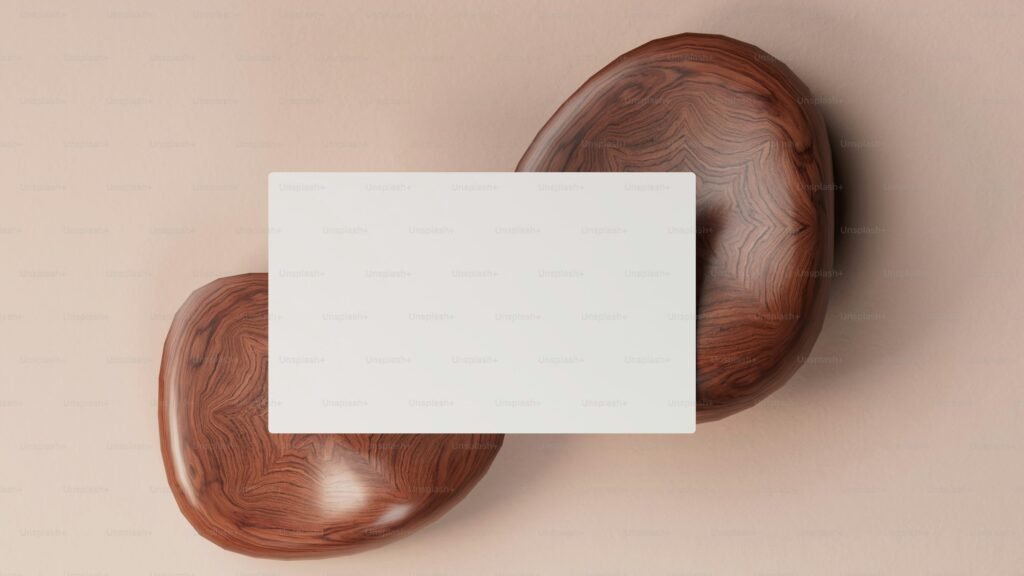In the world of networking, first impressions matter. One of the simplest yet most powerful tools to make that impression is a business card. However, a business card that’s too big, too small, or poorly designed may leave the wrong impression. In this complete guide, we’ll delve into the standard business card size, discuss its variations across different regions, and provide essential design tips to ensure your business card stands out for the right reasons.
Business Card Dimensions: What is the Standard Size?
The standard business card size varies slightly by country, but in most cases, business cards are designed to fit easily in a wallet or cardholder. Here’s a quick breakdown of the most common dimensions:
- United States and Canada: 3.5 x 2 inches (89 x 51 mm)
- United Kingdom: 3.35 x 2.17 inches (85 x 55 mm)
- Japan: 3.58 x 2.17 inches (91 x 55 mm)
- Europe (standard): 3.35 x 2.17 inches (85 x 55 mm)
These dimensions are tailored to fit standard cardholders and wallets. While these are the most common sizes, you can customize your business card size to make a unique statement — just make sure it still fits common storage spaces. How to Use the Oklahoma Secretary of State Business Search: A Step-by-Step Guide
Design Tips for Business Cards
Your business card is a reflection of your brand and your personal style. Here are some key design elements to consider:
1. Paper Stock
The texture and thickness of your business card can make a big impact. Thicker cards tend to feel more premium, while glossy finishes may offer a modern, sleek look. Popular choices for paper stock include:
- Matte: A subtle finish that feels smooth and professional.
- Glossy: Offers a reflective finish, ideal for designs with images or color.
- Textured: Great for adding a tactile element to your business card.
2. Font Size and Style
Ensure your font size is legible. For names and titles, font sizes of 10-12 points work well, while smaller details like phone numbers can go down to 8 points, but no smaller.
3. Whitespace
Avoid clutter by leaving ample whitespace around your content. A clean, minimalist design makes it easier for people to find the information they need.
4. Brand Colors
Incorporate your brand’s color palette for consistency. Use these colors to make your card visually cohesive with your website, logo, and other marketing materials. What Are the 3 Aspects of Culture?
Standard Business Card Dimensions Across Regions
While the standard business card size may vary slightly across regions, the differences are minimal and won’t affect their functionality. Let’s look at the details:
- North America : The standard 3.5 x 2 inches dimension is the most commonly used. This size fits perfectly into wallets, cardholders, and is commonly recognized as the default size in the printing industry.
- Europe: In most European countries, the size is just a touch different at 3.35 x 2.17 inches (85 x 55 mm). The slightly narrower and taller dimensions are tailored to European wallets and holders.
- Japan: Business cards in Japan are slightly longer at 3.58 x 2.17 inches. This is because business cards, or “meishi” as they are called in Japan, play a vital role in formal business introductions, and they often contain more detailed contact information.
These small regional variations exist, but for the most part, business cards are universally designed to fit the same types of wallets and holders.
Why Does Business Card Size Matter?
Choosing the right business card size is crucial because it ensures your card is practical and functional. A card that is too large might not fit into a wallet or business card holder, and one that is too small might get lost easily.
Tips for Custom Sizes
While sticking to standard sizes is advisable, you can opt for a custom size if you want your card to stand out. However, be mindful of practicality. Unique shapes or sizes may capture attention, but they also risk being discarded if they don’t fit into standard wallets or holders.
Using the Keyword Naturally Throughout the Post
When discussing standard business card size, make sure to mention the exact dimensions, its significance, and how to design around it throughout the article. For example:
- Natural Integration Example: “When designing a card for US markets, the standard business card size of 3.5 x 2 inches ensures that your card fits neatly into cardholders and wallets, making it more convenient for your contacts to store and retrieve.”
By incorporating the keyword naturally and avoiding overstuffing, you ensure the content reads well and is SEO-friendly.
Including Images and Videos
Adding visuals enhances the reader’s experience and helps explain complex ideas with ease. Here are a few ways to make your post more visually engaging:
- Images: Include sample images of business cards showcasing the standard sizes in different regions. A side-by-side comparison of a US business card vs. a European one could help readers see the difference.
- Videos: A short video demonstrating how to design a business card using tools like Canva or Adobe Illustrator can engage readers further and add practical value.
Make sure your images and videos are optimized with descriptive alt text that includes the keyword “standard business card size.”
Conclusion:
The standard business card size is a crucial detail in creating a professional, effective card. By understanding regional differences and applying thoughtful design tips, you can create a card that not only fits but also leaves a lasting impression. Use the dimensions and design advice outlined in this guide to ensure your business card is both functional and memorable.



